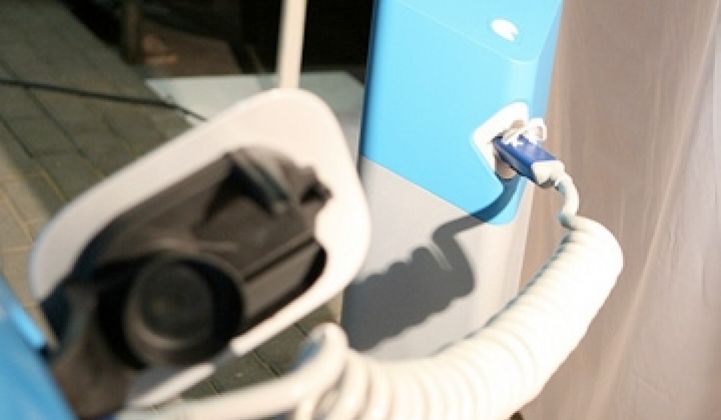Better Place, the company that wants to establish charging networks for electric cars, is trying to cut down its nodes.
The company has hired a number of computer experts, mapping specialists and cellular engineers to help it optimize the resources needed for its charging networks, according to spokesman Joe Paluska. It is also working with large customers in Israel, who plan to buy cars for their fleets that can be charged on a local network, to gather information on where to place charging spots.
The idea is to do less with more. Cutting down the number of charging and battery switching stations will curb the capital required to build the networks. The trick is balancing cost reduction against the need to give customers the sense of security that a charging station will be there when they need it. Overcoming range anxiety remains one of the major hurdles for electric car makers.
In Israel, for instance, Better Place stated in 2008 that it wanted to build 100,000 charging stations. Through network optimization, the company, ideally, will be able to scale that to somewhere between 50,000 to 100,000.
Better Place is in the midst of building networks in Israel and Denmark. Currently, the vast bulk of Better Place's work remains ahead of it. So far, it has built 1,000 test-charging stations in Israel. (Yesterday, we quoted a blogger who stated that Better Place had said that it had erected 20 test-charging stations in Jerusalem. Clearly, that didn't provide the full picture so we're glad to now give the full perspective.) Still, that leaves one heck of a lot of installations.
The New York Times this week stated that 55 charging stations are ready in Denmark. In January, the company discussed having 100,000 in Denmark in 2010.
The company is currently finalizing the design of the charging station that will be deployed commercially, according to Paluska. When that is complete, mass manufacturing of charging stations will begin. Expect to see substantial activity in the second half of 2010.
Some of the bigger customers in Israel will be fleet buyers. Better Place has already signed deals with 50 "vision partners" that will take a collective 35,000 cars.
The company has always said that 2011 is when the cars and the charging networks will launch, Paluska stated.
The next two years will mark a watershed in electric cars. Right now, only a few companies – Tesla, Subaru, Mitsubishi – sell electric cars and, so far, the numbers of cars coming out of factories remains relatively small in the larger scheme of things. But next year, Nissan, General Motors, Fisker Automotive and others will release all-electrics and plug-in hybrids and more companies and models will follow in 2011 and 2012. By 2020, Ford says that 25 percent of cars will drive on electricity in some manner. Warren Buffett has predicted that 100 percent of cars could go electric by 2030.
How will they get charged? Better Place says it will try to keep car costs low by charging consumers a per kilometer driving fee. Others want to put up stations that will charge flat fees for power.
Then there is free. Some retailers in California have erected complimentary charging stations for customers. With electricity selling for ten to 18 cents a kilowatt hour, it could become a popular way to build consumer loyalty, at least until electric cars swamp the road. Better Place has said it plans to charge for customers on a per kilometer basis for the battery and power required to operate a car.
Photo via Better Place.



